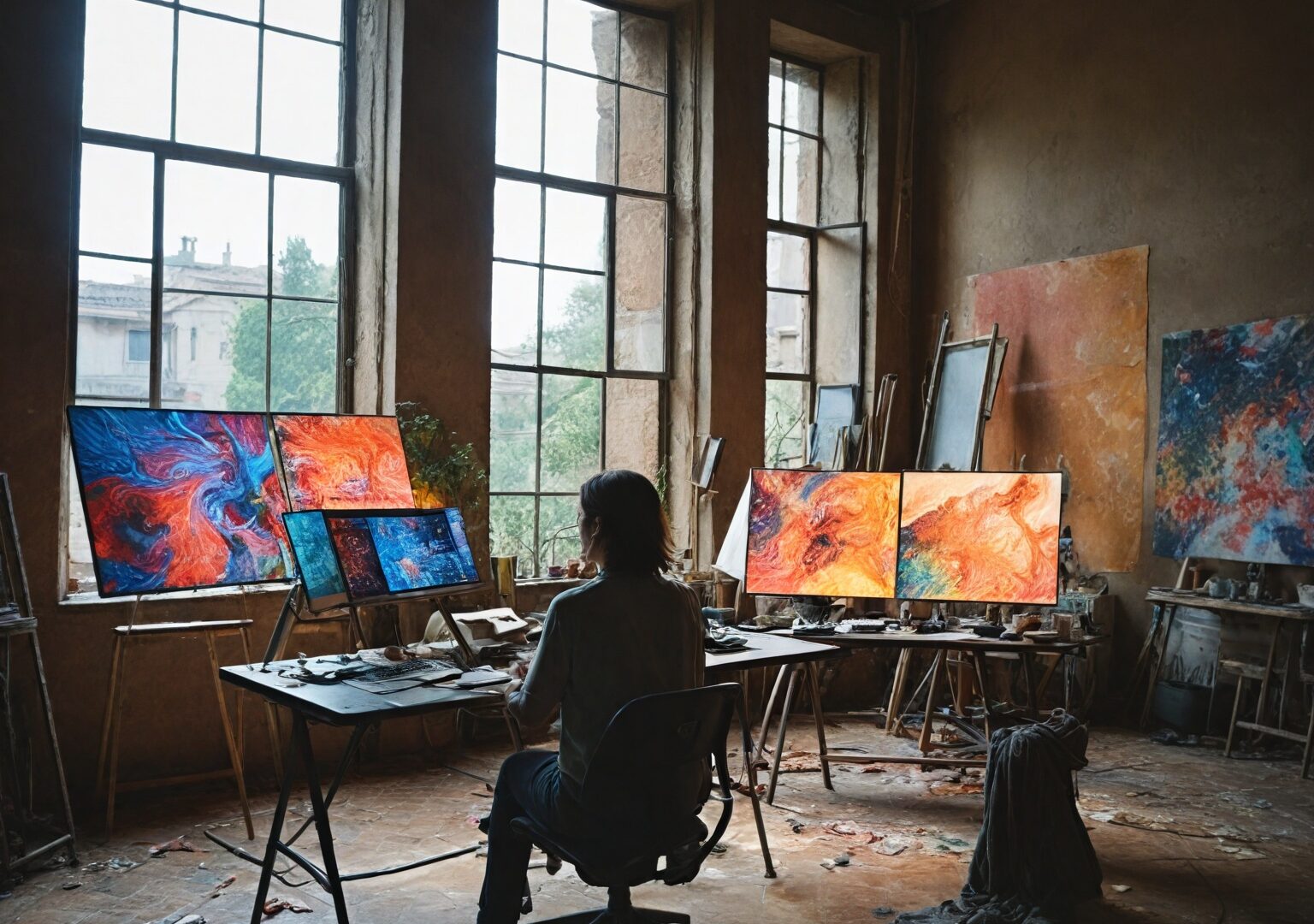Highlights:
– Recent protest by musicians against AI companies’ use of copyright-protected work.
– Open letter to Christie’s auction house calling for the cancellation of art sale created with generative AI.
– Artists exploring and disrupting the use of AI in image production.
Exploring the Impact of AI on Artistic Creativity
The intersection of artificial intelligence (AI) and art has sparked controversies and raised critical questions about the rights of artists and the essence of creativity. Recent events, such as the protest by musicians and the open letter to Christie’s auction house, shed light on the evolving relationship between technology, creativity, and intellectual property. The use of generative AI in creating art has become a focal point for discussions on the boundaries of copyright and the role of human ingenuity in the age of automation.
Generative AI, like Dall-E, Midjourney, and Stable Diffusion, has challenged traditional notions of artistic creation by generating images based on vast datasets. This has prompted debates on the application of concepts like “fair use” and originality in the context of AI-generated art. The need to navigate this evolving landscape of AI in art underscores the urgency for a deeper understanding of how technology intersects with creativity and expression.
Exploring the Intersection of AI and Art
As the impact of AI on the creative industries garners attention, the focus shifts to exploring AI image processing models from within. Research collaborations, such as the work with artist Trevor Paglen, offer insights into the mechanisms behind training AI on diverse datasets and how these models shape our perception of the world. By delving into interdisciplinary methodologies that merge art and technology, a more nuanced understanding of AI’s role in artistic production emerges.
Through examples like xhairymutantx and Machine Hallucinations – ISS Dreams, artists like Holly Herndon, Mat Dryhurst, and Refik Anandol highlight the capacity to manipulate and disrupt AI image production. By actively engaging with the data sets used to train AI models, these artists challenge the conventions of image creation and draw attention to the nuances of AI’s creative process. Their work underscores the importance of critically examining and demystifying the operation of AI in artistic contexts to foster accountability and deeper engagement.
Implications and Future Directions
The critical approach taken by artists in exploring the boundaries of AI and art offers a glimpse into the transformative power of technology in shaping creative expression. By unveiling the internal workings of AI systems and provoking dialogue on accountability and transparency, artists pave the way for a more informed and introspective engagement with AI in art. As AI continues to redefine artistic practices, the evolving dialogue between technology, creativity, and ethics will shape the future of artistic innovation and expression.
In conclusion, the evolving landscape of AI in art invites reflection on the boundaries of creativity, intellectual property, and technology. How can collaborative efforts between artists and technologists forge new paths for innovation in the digital age? What role does transparency and ethical considerations play in the integration of AI in artistic practices? How can society adapt to the changing dynamics of creativity in a technology-driven world?
Editorial content by Charlie Davis


